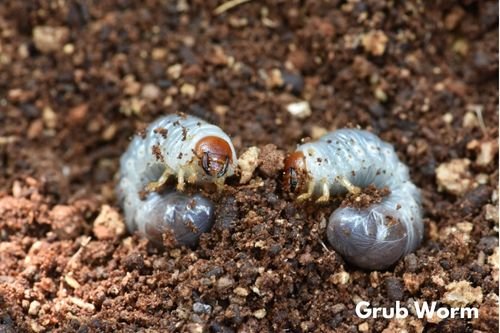
Imagine the soil in your garden like a buffet; each type has different dishes that cater to various tastes. Grubs are no exception. They have their preferences, and understanding those could help us manage our gardens more effectively. So, let’s dig deep, pun intended, to see how these little critters interact with sandy and clay soils.
What Are Grub Worms?
Before diving into soil types, let’s clarify what we mean by *grub worms*. Typically, these are the larvae of beetles, most commonly the Japanese beetle or the June bug. They spend their early life underground, feasting on roots, decomposing organic matter, and sometimes even the grass itself.
Grub worms have a distinct appearance: they’re usually white or light gray, with a curled shape. If you’ve noticed patches of dead grass in your yard, it might be a sign of these little critters munching away below the surface. They prefer to stay hidden in the soil, making it essential to understand their relationship with different soil types.
Understanding Sandy Soil
Now, let’s talk about sandy soil. Picture a beach—sandy soil has large particles that feel gritty and drain water very quickly. This type of soil is often easy to work with and warms up faster in spring, making it ideal for early planting.
However, sandy soil also has its downsides. Its drainage may leave it dry too quickly, which can affect moisture availability for grubs. Here’s the thing: while sandy soil allows for easy movement and aeration, it doesn’t hold nutrients well. And guess what? Grub worms thrive on a nutrient-rich diet, mainly organic matter and decaying plant roots. So, if you have sandy soil, you might find fewer grubs due to a lack of vital nutrients.
Pros and Cons of Sandy Soil for Grubs
- Pros: Easy for grubs to move through.
- Cons: Low nutrient retention means less food for grubs.
In a nutshell, while sandy soil might be a comfy home for grubs for a little while, the lack of nutrients could mean they won’t thrive there as much. Let’s shift our focus to clay soil.
Exploring Clay Soil
Clay soil is like a sticky, muddy mess you might squish between your fingers. It consists of tiny particles that compact tightly together, leading to poor drainage. When it rains, the soil can become waterlogged, and in dry spells, it hardens like concrete.
Grub worms, on the other hand, might find clay soil to be a pretty decent option. The higher organic matter retained in clay soil can provide a consistent food source for them. Plus, the moisture content makes it easier for grubs to survive, even when environmental conditions change.
Advantages and Disadvantages of Clay Soil for Grubs
- Advantages: Retains moisture and nutrients, making food abundant.
- Disadvantages: Dense structure can restrict mobility.
So, clay soil seems to have a leg up for grub worms, thanks to its nutrient availability and moisture retention. But, it can also be a bit of a challenge for them to navigate.
Comparing Sandy and Clay Soil: Where Do Grubs Prefer to Thrive?
At this point, you might be wondering which soil type grub worms prefer. It’s a bit of a balancing act. While sandy soil allows for easy movement, it lacks in nutrients, making it a less favorable environment for long-term grub survival.
Conversely, clay soil offers grubs a consistent food source thanks to its nutrient-rich content and moisture retention. Yet, the dense composition can slow down their mobility. In essence, grub worms may not thrive in sandy soil as well as they do in clay soil. However, they’d prefer organic matter-rich areas within both soil types.
How Soil Type Affects Your Lawn
Understanding the soil conditions in your yard can help you tackle grub issues before they escalate. If you’re dealing with sandy soil, consider enriching it with organic compost to make it more hospitable to grubs. On the flip side, if your lawn is clay-heavy, you might want to aerate the soil or add sand to improve drainage.
Managing Grub Worm Populations
So, now that we know where grub worms thrive, how can we manage their populations? Whether you’ve got sandy or clay soil, there are strategies to keep these critters in check.
1. **Regular Lawn Maintenance**: Keep your lawn healthy with regular watering and fertilization. A strong lawn can withstand minor grub infestations.
2. **Soil Testing**: Regularly test your soil to find out its nutrient composition. This helps you know what to add to keep your soil healthy.
3. **Organic Pesticides**: If the grub population gets out of hand, consider using organic pesticides that target grubs without harming beneficial insects.
In the battle of sandy versus clay soil for grub worms, it’s clear that **clay soil** tends to be more favorable due to its moisture and nutrient retention. However, both soil types come with their own sets of challenges. By understanding these dynamics, you can take better care of your garden and lawn.
So, whether you’re adding organic matter to sandy soil or aerating your clay, you’re already on the right path. The more you know about the environment these little bugs thrive in, the better equipped you’ll be to manage them. Happy gardening!
